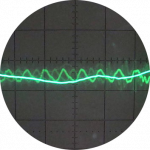As someone who works in the mining industry this analogy appalled me lol. Trucks don't load hoppers. It's drawn directly from a surge pile
- @batalto well that's scuppered the explanation I had in mind for why heat pumps are more efficient at low temperature than at high temperature, and why PHEs are bad for efficiency even if no coal is lost, the workforce is transhipping continuously and the trains on both sides have sufficient capacity.
4kW peak of solar PV since 2011; EV and a 1930s house which has been partially renovated to improve its efficiency. 7kW Vaillant heat pump.
Posted by: @bataltoAs someone who works in the mining industry this analogy appalled me lol. Trucks don't load hoppers. It's drawn directly from a surge pile
I worked at the unloading end, the power station, where the coal trucks were unloaded into underground bunkers, and the coal was extracted from these bunkers onto conveyor belts, which then conveyed the coal out to the stockpile or up to the Unit bunkers within the boilerhouse. Out of interest, please explain how the coal trucks were loaded at the colliery?
@derek-m coal isn't really my thing. However, been to plenty of mines. Two loading methods, continuous mining which is done via conveyors. The mining is continuous from underground using large machines which shear off the coal. In a normal open pit scenario you would use trucks and shovels/excavators. A few big coal mines have bucket wheels which are truly enormous and fall into the "continuous" mining section
Posted by: @jamespa
- @batalto well that's scuppered the explanation I had in mind for why heat pumps are more efficient at low temperature than at high temperature, and why PHEs are bad for efficiency even if no coal is lost, the workforce is transhipping continuously and the trains on both sides have sufficient capacity.
Probably a better analogy is to use a liquid such as water or oil, rather than a solid like coal.
A receiving tank would represent the heat emitters, such that the higher the level in the tank, the faster the flow rate out at the bottom of the tank. But the receiving tank is located inside a larger tank, in which the level of liquid can vary (outside temperature), so if the level in the outer tank is equal to the level in the receiving tank, there will be no flow of liquid.
The PHE could be represented by two tanks, connected together by pipework through a restriction. The primary tank being supplied by a flow from the source tank (heat pump), also through a restriction, and the secondary tank feeding the receiving tank.
If the level of liquid in the outer tank starts to fall (lower outside temperature), liquid will flow from the receiving tank (heat emitters) at a rate dependent upon the difference between the two levels. This in turn will cause liquid to flow from the secondary tank (PHE) into the receiving tank. As the level falls in the secondary tank then liquid will flow from the primary tank (PHE). In turn liquid will now start to flow from the source tank (heat pump) into the primary tank. Because of the restrictions, as the flow rate increases (higher heat demand), the difference in tank levels will need to increase (Delta T), to achieve the required flow rate.
If the level in the source tank is increased (higher LWT), there will be more flow into the primary tank increasing its level, this in turn will cause a greater flow into the secondary tank, also increasing its level, which will therefore increase the level in the receiving tank, and the flow rate into the outer tank. To prevent the receiving tank from overflowing there is a shut-off valve on the supply to the source tank, which closes (heat pump stops) when the receiving tank reaches say 80% full.
With the supply shut-off, the levels within the tanks will start to balance and the flow rates reduce, but if the level in the outer tank is below the receiving tank, the levels in the tanks will also gradually fall. To prevent the level in the receiving tank from falling below a certain level (indoor temperature setting), when this is reached the shut-off valve is opened, and the supply to the source tank is restored (heat pump restarts). This represents the cycling that can occur during milder weather conditions.
In colder weather conditions, the flow rate from the receiving tank to the outer tank is such, that the level in the receiving tank does not reach the 80% level, and therefore does not shut-off the supply.
I will leave it to others to explain defrosting.
Posted by: @batalto@derek-m coal isn't really my thing. However, been to plenty of mines. Two loading methods, continuous mining which is done via conveyors. The mining is continuous from underground using large machines which shear off the coal. In a normal open pit scenario you would use trucks and shovels/excavators. A few big coal mines have bucket wheels which are truly enormous and fall into the "continuous" mining section
At the 2000MW power stations at which I worked, when operating at full load they would burn 20000 tonnes of coal per day, so would need to move approaching 1000 tonnes per hour. Each train would deliver approximately 1000 tonnes, and could be unloaded in 30 minutes. The coal would go directly from the unloading bunkers, up to the boilerhouse bunkers, or out to stock via bucket wheel. The bucket wheel being used to reclaim from stock.
The coal trucks were filled from the top, I presume from bunkers at the coal mine, and emptied via doors in the bottom of the truck, when they were positioned over the unloading bunkers, or hoppers if you prefer.
Now you have to collect buckets full of wind, and throw it at big fans out in the middle of the sea. 😋
Delighted to see my train analogy has led to an most interesting and good natured discussion which has certainly helped me better grasp the principles involved. One of the delights of this forum is the range of interests knowledge and experience of contributors, thank you all very much!
Midea 14kW (for now...) ASHP heating both building and DHW
@derek-m 1000tph isn't that great a volume to be honest. I've worked at mines with production rates of 250,000 tonnes a day of hard rock. Soft rock mines e.g. coal 1000 tonnes per hour is easy especially as the ultra trucks are 300t+ in capacity
Posted by: @batalto@derek-m 1000tph isn't that great a volume to be honest. I've worked at mines with production rates of 250,000 tonnes a day of hard rock. Soft rock mines e.g. coal 1000 tonnes per hour is easy especially as the ultra trucks are 300t+ in capacity
I'm sorry, but we could not burn the coal any faster, because the people were not using the electricity quickly enough. 😋 It is all their fault. 🙄
Posted by: @bataltoCan confirm, they (Freedom) said I could take out the LLH with no impact as long as it was done by someone they work with.
No negative impacts at all from what I've seen
Out of interest how do you get yours to to run with LWT below 35? Mine refuses to go lower.
Phil
Posted by: @filipeHow do you get this figure as it does not appear on my wired controller?
Nor on mine, so you are not not seeing it there. Energy in is there, but in kkWh as an integer, so pretty useless. I got/get energy out in two ways, initially using midea_ac_lan in HA, and now over modbus using my minimalmodbus python script. It gets logged at minute intervals, meaning I can get interval use by subtracting past reading from current reading eg last 24 hour's use = value now minus value 24 hours ago. Last heating seasons use is value on 1st May this year minus value on 1st Oct last year and so on.
Alternatively, I think you can probably get it from the Midea app by summing year use in the history data pages. As the app is flakier than badly peeling paint I'm not sure I'd trust it one bit.
According to the wired controller modbus register tables, the weather comp curve ('ninth curve') LWT allowed range is 25 to 65 degrees for both ends of the curve. The addresses are 265/266. Note there is a typo in the right hand column, it says cooling when it means heating, presumably another attempt by Midea to make sure we live in interesting times. The middle column confirms it is heating (T1SetH1 etc). Maybe you are trying to set something else? As I recall, you may not be using weather compensation, in which case you won't be setting the 'ninth curve' values.
Midea 14kW (for now...) ASHP heating both building and DHW
- 26 Forums
- 2,342 Topics
- 53 K Posts
- 212 Online
- 6,000 Members
Join Us!
Worth Watching
Latest Posts
-
RE: Who's your electricity provider and what's your tariff?
I've not heard anything about this, as yet. I get the ...
By Sheriff Fatman , 5 hours ago
-
Agree with @majordennisbloodnok on the setbacks. We hav...
By ChandyKris , 7 hours ago
-

RE: Advice on internal circulation pump noise
I agree with @jamespa that your buffer tank and seconda...
By GrahamF , 7 hours ago
-

RE: Heat Pump Heats the House… But It’s Not Cosy. Emitter Changes or System Tweak?
A quick Google search showed that building regulations ...
By GrahamF , 8 hours ago
-
RE: Octopus Cosy Heat Pump Owners & Discussion Thread
@agentgeorge I first heard (read) about it on FB this m...
By AndrewJ , 8 hours ago
-
RE: New Fogstar 15.5kWh upright solution
It is a matter of luck. 2ith Fogstar "instructions", to...
By Batpred , 8 hours ago
-

RE: Speedcomfort radiator fans
@deltona the way the links were added broke the page. A...
By Mars , 8 hours ago
-

RE: Setback savings - fact or fiction?
I agree! Even more so if we get an answer! But the chal...
By cathodeRay , 10 hours ago
-

RE: Refrigerant R32, is it now banned in the EU from 1st Jan 2027 for monobloc ASHPs?
This has been delayed from what I believe to be this ye...
By dgclimatecontrol , 13 hours ago
-
RE: Are We Sleepwalking Into Another Race to the Bottom?
this is why I provided current flow temperatures in the...
By ksim , 14 hours ago
-

RE: Why Millions of UK Homes Struggle With Heat Pumps
There's many homes that would be quite a disruption for...
By dgclimatecontrol , 14 hours ago
-
RE: Ecodan unable to hit legionella target temp - what's the consensus?
@rhh2348 ...maybe this option is what you want? Alter...
By benson , 15 hours ago
-

RE: Free Ecoheat Heat Pump Install
@old_scientist This does make the unit smaller as the b...
By dgclimatecontrol , 15 hours ago
-
RE: Ecodan - Legionella Operation Time and Target Temperature
@old_scientist hiya mate, did you ever get to the botto...
By 9jwr9 , 21 hours ago
-
RE: Configuring third party dongle for Ecodan local control
@majordennisbloodnok I think the HPDHD diagnosis may be...
By Sheriff Fatman , 1 day ago
-

RE: External pipework insulation
I don't think we can tell from a photo whether your exi...
By Transparent , 1 day ago
-
RE: Controlling Daikin Altherma via P1P2 and Home Assistant
@majordennisbloodnok That’s correct. I can’t find anywh...
By weoleyric , 2 days ago
-

RE: A Smarter Smart Controller from Homely?
@papahuhu I hope you get a swift resolution. Regards, T...
By Toodles , 3 days ago




